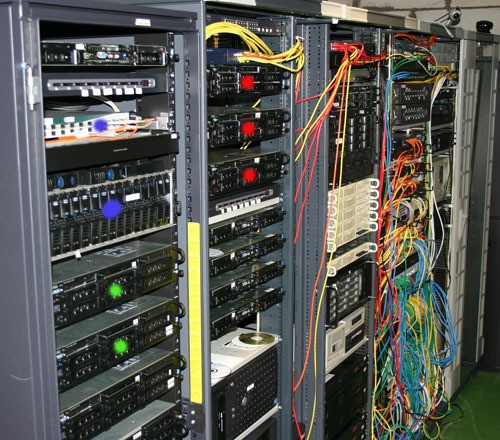This post will introduce you a high-speed network technology – Fibre Channel. The article contains the definition, main features of Fibre Channel. Besides, Fibre Channel vs. ISCSI is also talked about.
Network is a necessary part in modern life, and multiple kinds of networks are available now. For instance, the frequent ISCSI network, Ethernet network, and the Fibre Channel talked about in this post are commonly used in daily life.
What is Fibre Channel? MiniTool will show you the details in the following content. So, please keep reading the post.
What Is Fibre Channel
Fibre Channel (FC) refers to a high-speed (often running at 1, 2, 4, 8, 16, 32, 64, and 128 gigabit/s) networking technology, which is mainly used for transferring data among data centers, computer and other cases.

-image from tech-faq.com
Fiber Channel can deliver data in an orderly and error-free manner. Fibre Channel networks can form a switch structure because the switches in the network work as a large switch. Generally speaking, Fibre Channel runs on optical fiber cables within and between multiple data centers.
Of course, it can also run on copper cabling. Multiple upper level protocols like Fibre Channel Protocol (FCP) and FICON are available for Fibre Channel. Besides, FC has its own layers that can be divided into the following types.
- FC-0: The interface to the physical media, cables and so forth.
- FC-1: It is a transmission protocol or data-link layer that can encode and decode signals.
- FC-2: It is a network layer (the core of FC).
- FC-3: It contains common services like hunt groups.
- FC-4: It is the protocol map of SCSI, iSCSI, FCP, IP. etc.
You may also like: What Is Fibre Channel Arbitrated Loop and How’s It Working
The 4 Main Features of Fibre Channel
Fibre Channel network has some advantages over other networks especially the Ethernet network. What are they? The detailed information will be listed as follows. You can take it as your reference.
Fibre Chanel is more reliable: Fibre Channel network runs on an almost lossless protocol. The data that is transmitted via Fibre Channel must be received in a certain order. Therefore, if you transmit a bunch of data via Fiber Channel, the data will reach the destination in an in-order and lossless way.
Fibre Channel enjoys high security level: Fibre Channel is directly connected to the storage network that it runs on. In addition, Fiber Channel network will bridge several security zones so that the security is under the control of one block and not spread out over multiple pieces.
Cost: To use Fiber Channel network, you need a specified card for each server in the Fibre Channel array. And you should notice that Fibre Channel charges you more than ISCSI equipment.
Fibre Channel will not dead or dying: Fibre Channel has been beloved by network administrators for rather a long time so that it is embedded in enterprise systems. Given to that fact, Fire Channel will not dead or dying. Though the technology in speed and transfer will help more acolytes to the table, Fiber Channel is still a suitable method for long-term and enterprise-level data storage.
Fibre Channel vs. ISCSI
ISCSI and Fiber Channel are the two main approaches to transfer data to remote storage. So, Fibre Channel vs. ISCSI: which one is better? Let’s make a simple comparison.
Fiber Channel is a kind of high-performance but expensive storage network. It requires you specialized admin skill sets. Fiber Channel is famous for its high building rating, management difficulty and inflexibility (due to incompatibilities between vendor and products).
ISCSI charges you less and is much easier to deploy and manage than FC. However, ISCSI has higher latency.
Fibre Channel vs. ISCSI: which one to pick? There is no absolute answer. You can choose one based on your demands. But you can take the above descriptions into consideration.
Bottom Line
What is Fiber Channel? You may have an overall understanding of this high-speed network. After comparing Fiber Channel and ISCSI, you can make a wise choice and then have a network experiment. Here comes the end of the port.